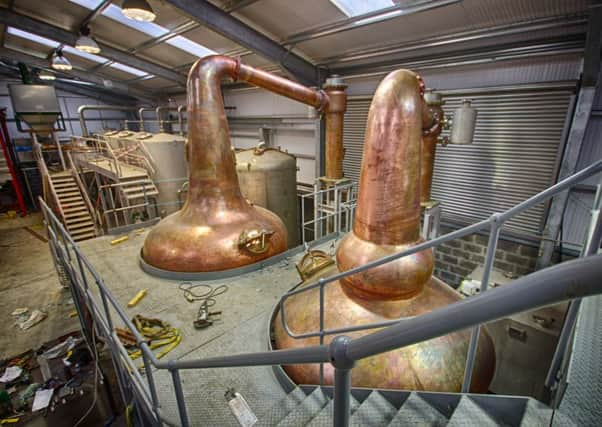Scotland’s whisky industry enjoying major boom


Currently experiencing its biggest boom in several generations, the industry’s continuous growth shows no indication of slowing. Demand has grown in both mature and emerging markets, so much so that exports of Scotch whisky now sit at £4.3bn and 40 bottles are shipped overseas every second, according to the Scotch Whisky Association.
In fact, Campbell Evans of the Association claims whisky now “accounts for more than 25% of the UK’s entire food and drink overseas market.”
Advertisement
Hide AdSo, why then is it experiencing such a massive increase in global demand?
Markets
Markets which are already established such as the US and France are seeing increasing demand, while inroads are being made in emerging markets such as India, Brazil, China and Russia.
The home market are also on the rise, with modern drinkers becoming far more discerning, seeking quality spirits such as whisky. Non-traditional groups such as younger drinkers and women are also increasingly enjoying whisky.
The industry hasn’t been lax in responding, with massive investment in infrastructure taking place up and down the country and new distilleries popping up for the first time since the mass closures of the 80s.
Diageo, owner of no less than 28 malt distilleries, are investing £1bn in their production infrastructure, with several distilleries being expanded and a new super distillery having being built in Roseisle, Speyside.
Not be outdone, Pernod Ricard, owners of Chivas Regal are also investing around £40m in improving the output of their major distilleries such as Glen Livet and Longmorn.
Teaspoon
Advertisement
Hide AdHowever, it is the humble teaspoon which seems to having the biggest impact on facilitating investment and the creation of new distilleries. For years, the industry has given several companies the option to buy their casks and allowed them to bottle these casks themselves, so long as the distillery from which the cask had been bought was clearly displayed.
In recent years tea spooning - the act of adding a small amount of whisky from another distillery to a cask to prevent the contents being sold as single malt - has become more prominent, meaning many independent bottlers are now struggling to find stock to meet rising demand.
Advertisement
Hide AdThe solution? Buy or build your own distillery of course, and this is what many have done. In a recent interview, Ewan Shand of Duncan Taylor was quite candid about the reasons behind their new distillery at Huntly.
“It is the best thing for Duncan Taylor as it’s the only way forward. Whisky companies no longer sell new fill to us minions and if they do it’s teaspooned and worse, any mature cask stock that comes on the market is pretty dire stuff these days. Thank goodness Duncan Taylor has sufficiently large stocks of casked whisky to give the company time to get the distillery built and producing.”
They are not the only ones going down this route; Gordon and Macphail have already shown how success is possible with the right approach in their work at Benromach distillery.
Now Adelphi and Wemyss malts are following in their footsteps. Adelphi by beginning construction of their new Ardnamurchan distillery and Wemyss by looking into building at Kingsbarns.
It’s not just these independent bottlers who are getting in on the game, with a raft of new distilleries beginning to pop up all over the country. It’s easy to see that more and more are looking at securing their very own piece of the pie, be they micro distilleries such as Daftmill and Glenrothes in Fife (not to be confused with the already existing speyside Glenrothes), or even DIY distilleries run by one man such as the Loch Ewe distillery which produces a miniscule 500 litres a year.
And with no sign of demand falling, International Wine & Spirit Research reckons global whisky consumption levels are likely to rise 12 per cent from 2012 to 2016 - more than double the rate of any other main spirit category, bar Cognac – this trend is only set to increase.
Age
Advertisement
Hide AdOther trends, such as the removal of age statements, are also seen as an attempt by the industry to combat the lack of supply by allowing distilleries to use up smaller amounts of older stock. A spokesperson from Whyte and Mackay believes that there is little risk in this strategy, saying: “For the foreseeable future, I believe non age statement products will come into fruition.
“We have already seen many companies move towards this and I believe it can only be a good thing for the industry as it gives the master blender more freedom to create different flavours and finishes without being restricted by age.”
Advertisement
Hide AdThere is still risk, as even though modern production techniques allow better whisky to be produced at younger ages, this could still mean a drop in quality. Only time will tell.
This is perhaps the true worry - will quality suffer as the industry places more emphasis on quantity? Already we are seeing the rise of non age statements, the fall of independent bottling, and a struggle to source decent casks. Another major concern that few people are addressing is price. As economics lesson one says, if demand rises then so must supply or price. With supply rising but struggling to match demand, will price be the real rising force?
One can only hope that these challenges are met, and that the industry continues to grow in a healthy and safe manner, preventing a turn from boom to bust.
SEE ALSO: